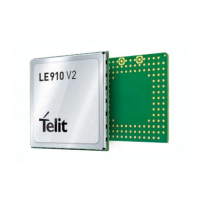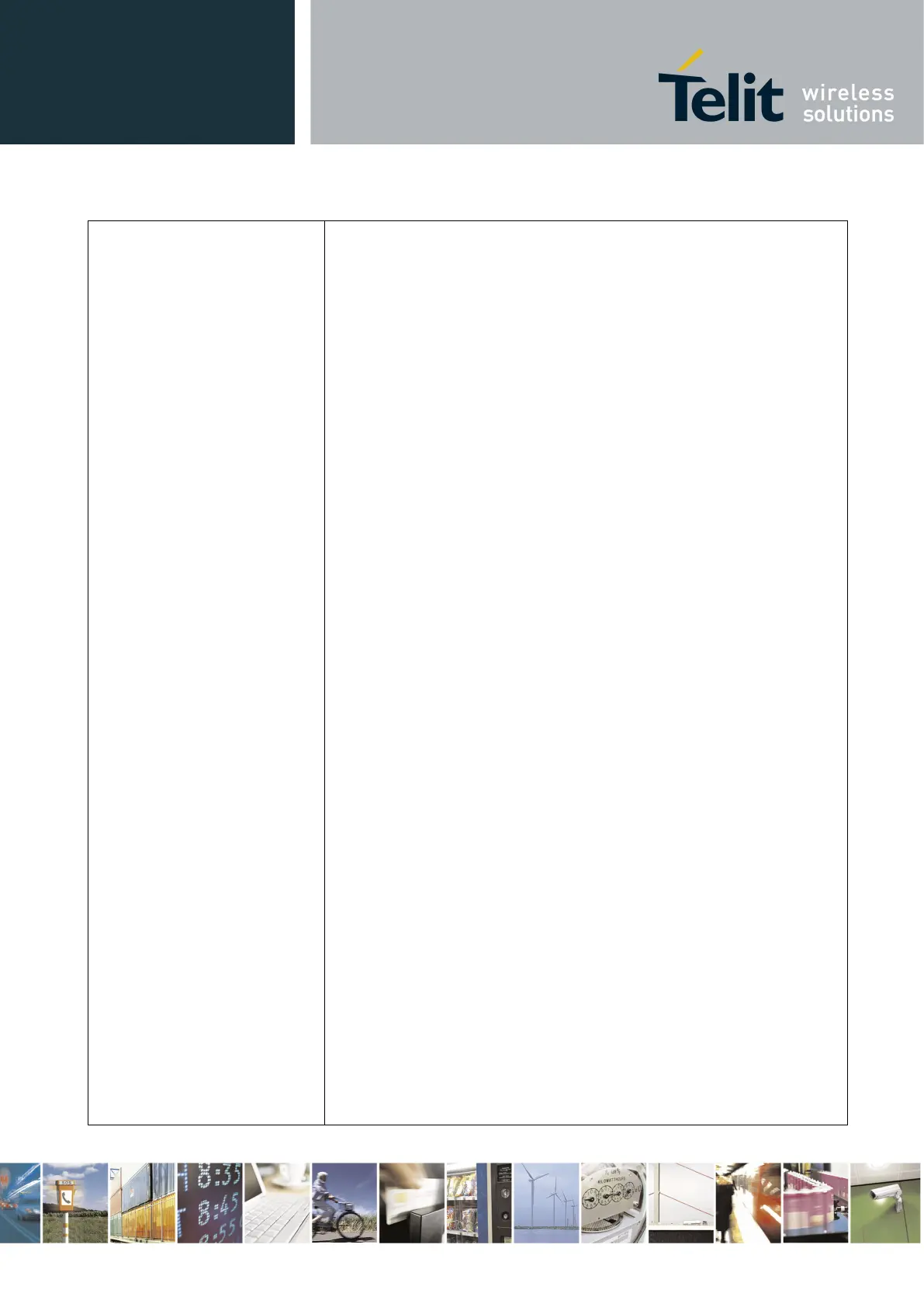Telit LE910 V2 Series AT Commands
80446ST10707A Rev. 0– 2015-11-03
Reproduction forbidden without Telit Communications S.p.A. written authorization - All Rights Reserved page 422 of 509
Mod. 0808 2011-07 Rev.2
<prof_id> - Numeric parameter indicating the profile identifier.
Range: 0-2
<command>: Numeric parameter indicating the command requested to
HTTP server:
0 – POST
1 – PUT
<resource>: String parameter indicating the HTTP resource (uri), object
of the request
<data_len>: Numeric parameter indicating the data length to input in
bytes
<post_param>: Numeric/string parameter indicating the HTTP Content-
type identifier, used only for POST command, optionally followed by
colon character (:) and a string that extends with sub-types the identifier:
“0[:extension]” – “application/x-www-form-urlencoded” with optional
extension
“1[:extension]” – “text/plain” with optional extension
“2[:extension]” – “application/octet-stream” with optional extension
“3[:extension]” – “multipart/form-data” with optional extension
other content – free string corresponding to other content type and
possible sub-types
<extra_header_line>: String parameter indicating optional HTTP header
line
If sending ends successfully, the response is OK; otherwise an error code
is reported.
Note: the HTTP request header sent with #HTTPSND always contains the
“Connection: close” line, and it can not be removed.
When the HTTP server answer is received, then the following URC is put
on the serial port:
#HTTPRING:
<prof_id>,<http_status_code>,<content_type>,<data_size>
Where:
<prof_id> is defined as above
<http_status_code> is the numeric status code, as received from the
server (see RFC 2616)
<content_type> is a string reporting the “Content-Type” header line, as
received from the server (see RFC 2616)

